The Everest Base Camp Trek with Helicopter Return combines adventure with convenience, allowing trekkers to experience the majestic Himalayas without the lengthy descent. This 12-day journey begins in Kathmandu and takes participants through picturesque towns like Namche Bazaar, making acclimatization manageable. After reaching Everest Base Camp, the trek culminates in an exhilarating helicopter flight back to Lukla, cutting travel time significantly. Those considering this trek might wonder about the preparation involved, the best seasons to embark, and how to ensure a safe experience. Exploring these aspects can make all the difference in planning an unforgettable adventure.
Key Points
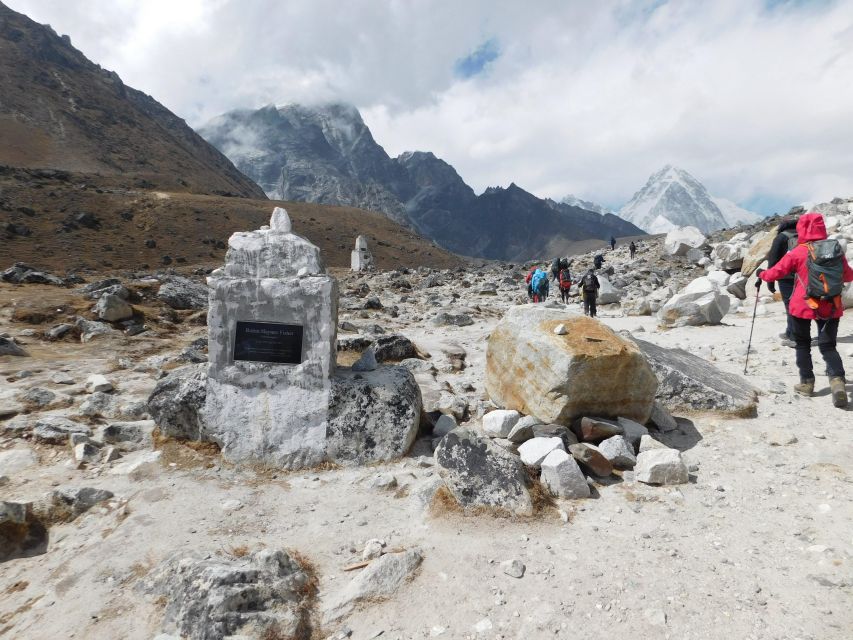
- The trek lasts 12 days, starting with a welcome in Kathmandu and includes a scenic flight to Lukla.
- Accommodation includes two nights in a 3-star hotel in Kathmandu and nine nights in cozy teahouses.
- The trek features acclimatization stops in Phakding and Namche Bazaar to ensure a safe ascent.
- A highlight of the trek is the sunrise hike to Kalapatthar after reaching Everest Base Camp.
- Enjoy a helicopter return to Lukla followed by a flight back to Kathmandu for a seamless end to your adventure.
It's also worth checking out some other tours and experiences nearby.
Trek Overview and Pricing
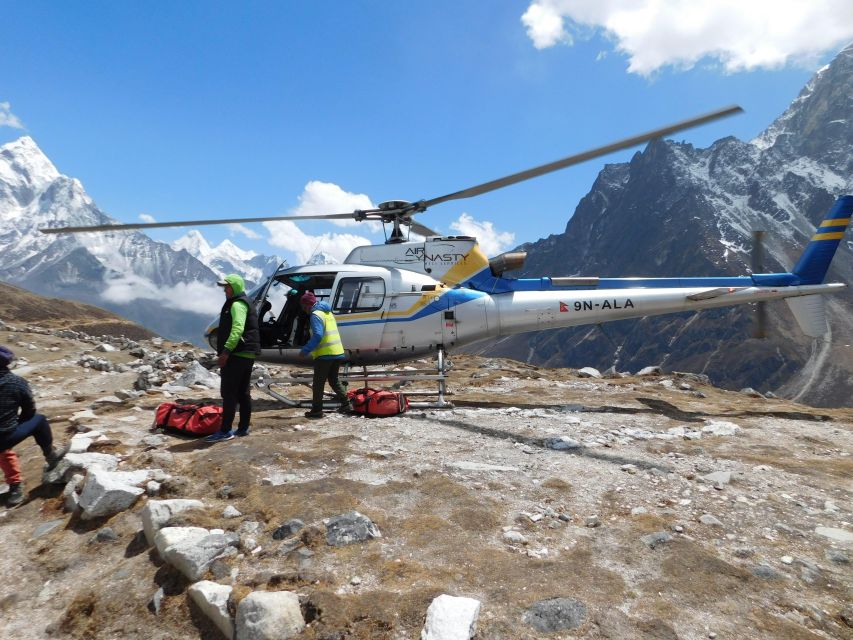
The Everest Base Camp Trek, which includes a helicopter return, offers an unforgettable 12-day adventure starting at $3,000.00 per person.
This journey provides a perfect blend of breathtaking views and cultural experiences in the heart of the Himalayas.
Participants can enjoy the flexibility of a free cancellation policy up to 24 hours before the trek for a full refund. Plus, a reserve now and pay later option makes planning easier.
The package encompasses essential inclusions, such as airport transfers, domestic flights, teahouse accommodations, and three meals daily during the trek.
With experienced guides and necessary permits included, trekkers can focus on the experience while staying well-prepared for the challenges ahead.
It’s an adventure that promises memories for a lifetime.
Detailed Itinerary
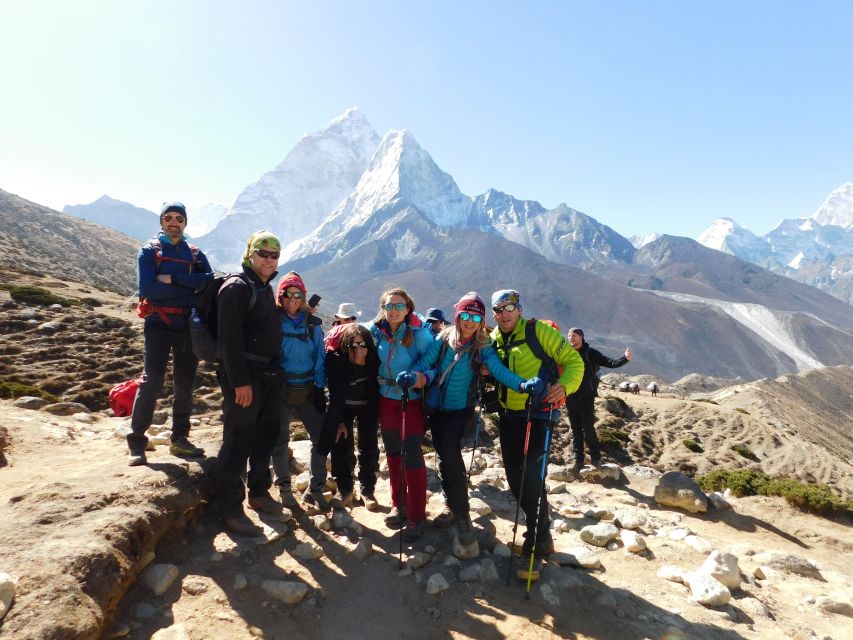
Prepare for an exhilarating journey through the majestic Himalayas with the detailed itinerary of the Everest Base Camp Trek, designed to showcase stunning scenery and unique cultural experiences over 12 unforgettable days.
The adventure kicks off with a warm welcome in Kathmandu, followed by a scenic flight to Lukla.
Trekking through charming villages like Phakding and Namche Bazaar, trekkers acclimatize while soaking in the breathtaking views.
After several days of hiking to Everest Base Camp, they’ll enjoy a sunrise hike to Kalapatthar.
The trek culminates in a thrilling helicopter return to Lukla, followed by a swift flight back to Kathmandu.
Each day is packed with excitement and awe, making this trek a once-in-a-lifetime experience.
Inclusions and Accommodations
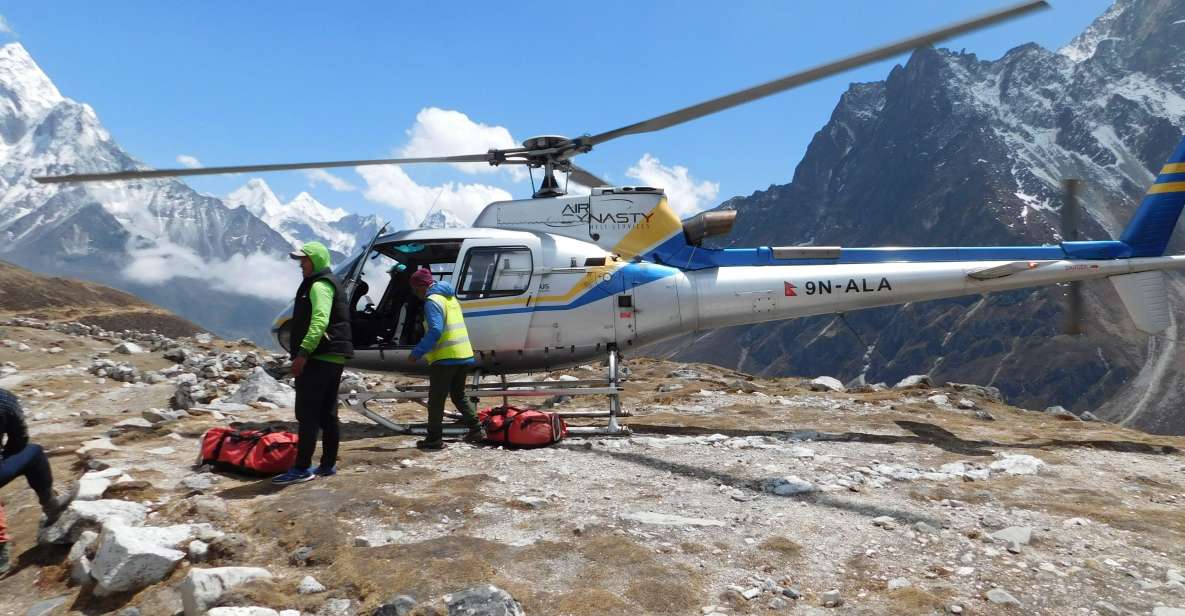
Inclusions and accommodations for the Everest Base Camp Trek ensure a comfortable and well-supported adventure, blending essential services with cozy lodging throughout the journey.
Travelers enjoy airport and hotel transfers via private vehicles, along with two nights in a 3-star hotel in Kathmandu, complete with breakfast.
During the trek, participants savor three meals a day and benefit from teahouse accommodations on a twin-sharing basis for nine nights.
Essential trekking permits, two-way domestic flights, and a private helicopter return add convenience.
An experienced trekking guide enhances the experience, while a first aid kit and necessary gear ensure safety.
Participants also receive an adventure certificate upon completion, making this trek both rewarding and memorable.
Preparation and Requirements
What should trekkers consider before embarking on the Everest Base Camp Trek to ensure a safe and enjoyable experience?
First, physical fitness is crucial; training for at least two months prior is recommended.
Trekkers should pack essential items like a passport, warm clothing, hiking shoes, sunscreen, and travel insurance. Cash and toiletries are also important.
It’s essential to leave prohibited items such as weapons, drones, and alcohol at home.
Plus, this trek isn’t suitable for children under 10, pregnant women, or those with certain health issues.
Important Information
Trekking to Everest Base Camp offers an incredible adventure, but trekkers should be aware of the physical demands and necessary preparations to ensure a safe and enjoyable journey. The trek includes a fully guided experience, with a trained local guide, and requires hikers to manage strenuous hiking, averaging 5-7 hours daily. Teahouse accommodations provide a cozy resting spot, and the itinerary can be customized for groups of two or more.
| Important Tips | Recommendations | Notes |
|---|---|---|
| Hike slowly | Stay hydrated | Special permits for drones |
| Wear appropriate gear | Follow your guide’s pace | Acclimatization days are vital |
| Respect the environment | Keep noise to a minimum | Cash is needed for tips |
Health and Safety Tips
Staying healthy and safe during the Everest Base Camp trek is crucial, as altitude sickness can affect even the most prepared trekkers. To mitigate risks, trekkers should adhere to a few essential health and safety tips.
-
Acclimatize Properly: Spend extra days at higher altitudes to adjust your body, especially in Namche Bazaar and Dingboche.
-
Stay Hydrated: Drink plenty of water throughout the trek. Dehydration can worsen altitude sickness symptoms.
-
Listen to Your Body: If you experience severe headaches, nausea, or dizziness, descend to a lower altitude immediately and seek help if needed.
Best Time to Trek
The best times to embark on the Everest Base Camp trek are typically during the pre-monsoon season in spring (March to May) and the post-monsoon season in autumn (September to November), when the weather is generally more stable and the views are breathtaking.
Spring offers mild temperatures, blooming rhododendrons, and clear skies, perfect for photography and enjoying the stunning landscapes.
In autumn, trekkers benefit from crisp air and vibrant fall colors, along with fewer clouds.
While winter (December to February) brings heavy snowfall and extreme temperatures, the summer months (June to August) are marked by monsoon rains, making trekking more challenging.
Planning your trek during these ideal times ensures a more enjoyable and rewarding experience.
Booking Process and Policies
When planning an Everest Base Camp trek, understanding the booking process and policies is essential for a smooth and enjoyable experience.
First, trekkers can secure their spot with a reserve now and pay later option, making it easier to budget.
Second, they should note the cancellation policy, which allows for free cancellation up to 24 hours in advance for a full refund.
Lastly, it’s crucial to prepare all necessary documentation and ensure that they meet the trek’s requirements.
Here are three key points to keep in mind:
-
Reserve now, pay later for financial flexibility.
-
Enjoy free cancellation up to 24 hours prior.
-
Ensure all personal requirements are met for a successful trek.
Here's a few more nearby tours and experiences we think you'll like.
Frequently Asked Questions
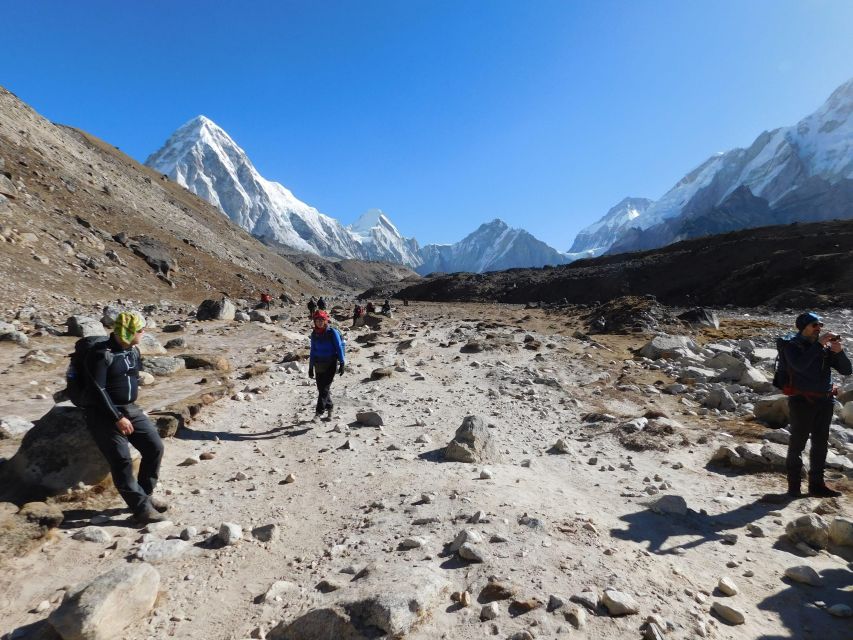
What Is the Best Time of Year for This Trek?
The best time for trekking in the Himalayas is typically spring (March to May) and autumn (September to November). During these months, weather conditions are stable, offering clearer skies and pleasant temperatures for hikers.
Are There Any Age Restrictions for Participants?
The trek has age restrictions; it isn’t suitable for children under 10, pregnant women, or individuals over 80. Participants should also be in good health, ensuring everyone can enjoy the experience safely and comfortably.
Is Travel Insurance Mandatory for This Trek?
Travel insurance isn’t mandatory for the trek, but it’s highly recommended. It protects against unexpected events, ensuring peace of mind. Many participants find it invaluable, covering medical emergencies, trip cancellations, and other unforeseen circumstances.
Can Dietary Restrictions Be Accommodated During the Trek?
Yes, dietary restrictions can be accommodated during the trek. The guide ensures meals cater to specific needs, but it’s best to inform them in advance. They’ll work to provide suitable options for everyone.
What Happens in Case of Emergencies During the Trek?
In emergencies, the experienced guide assesses the situation, providing immediate first aid. They’ll arrange for evacuation if necessary, ensuring safety. Trekking groups maintain communication with local authorities to facilitate prompt assistance when needed.
Not for you? Here's more of our most recent tour reviews happening neaby
- 7 Nights 8 Days Kathmandu Pokhara Tour With Dhampus Hike
- Annapurna Base Camp Trek । the Magical Beauty । 15 Days Trek
- 15 Days Annapurna Circuit Trek
- Everest Yoga Trek | Exotic Scenarios | 14 Day Trek
- Kathmandu: 12 Day Langtang Valley & Gosainkunda Private Trek
- Hiking, Meditation, Camping and Enjoying Local Food
- Kathmandu Pokhara Tours
- From Kathmandu: Gokyo Valley 15-Day Trek With Accommodation
- From Kathmandu: 9 Day Pikey Peak Trek
- From Kathmandu: Mardi Himal Base Camp
- From Kathmandu: Goorepani Poonhill Trekking Trip
- Everest Panorama Trek
- 3 Day Lumbini Tour From Kathmandu
- From Kathmandu: 10 Day Mardi Himal Trek
- Kathmandu: 7-Day Private Trek From Pokhara to Mardi Himal
Recap
The Everest Base Camp Trek with Helicopter Return offers a unique blend of adventure and convenience, making it perfect for those eager to explore the Himalayas.
With its well-planned itinerary and breathtaking views, trekkers can experience the magic of Everest without the hassle of a long descent.
Whether you’re a seasoned hiker or a first-time adventurer, this trek promises unforgettable memories and stunning landscapes.
So, gear up and get ready for an adventure of a lifetime!
